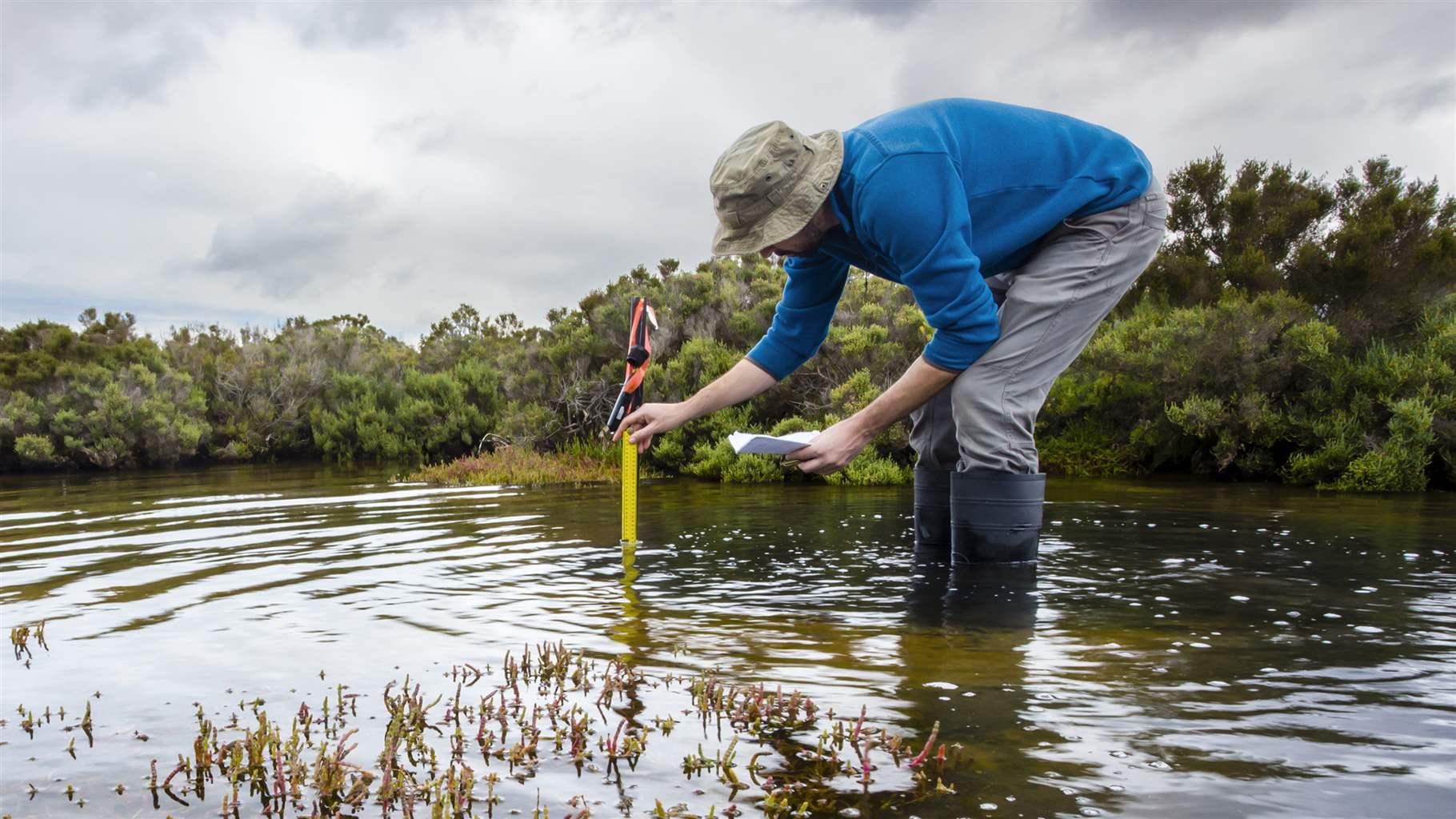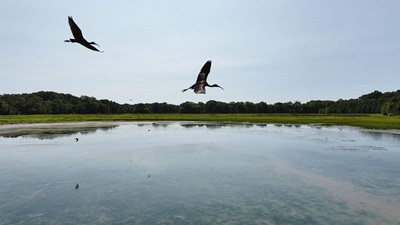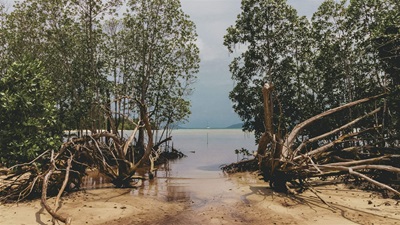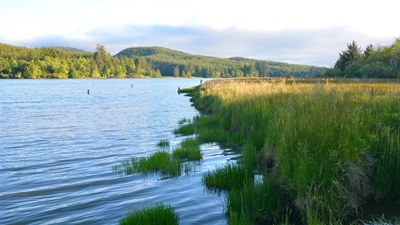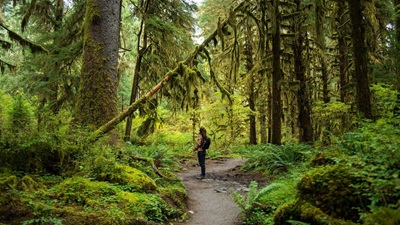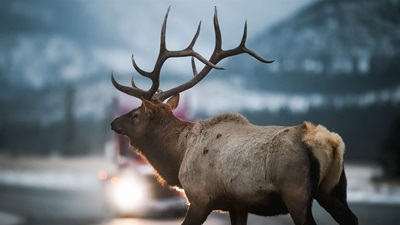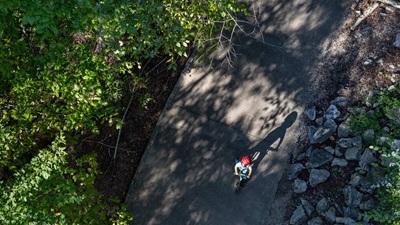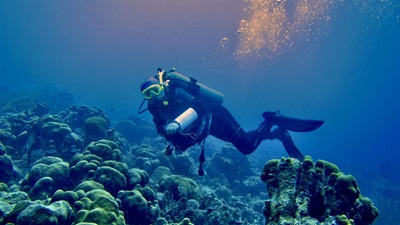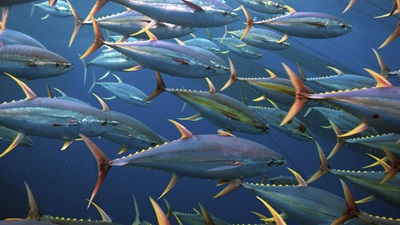Pacific Coast Tidal Wetlands Store Vast Amounts of Carbon, New Study Confirms
By protecting and restoring habitats, states can help nature, wildlife, communities, and economies

Conservationists have long stressed that protecting and restoring various ecosystems provides benefits to people and nature, including curbing the effects of a warming planet. Now, a new study published March 18 in the journal Global Biogeochemical Cycles further bolsters those claims. The study, largely funded by the National Oceanic and Atmospheric Administration National Estuarine Research Reserve System’s Science Collaborative with support from The Pew Charitable Trusts, found that the Pacific Northwest’s forested tidal swamps and Mexico's mangroves capture and store the largest amounts of carbon of any habitats on the Pacific coast of North America.
In just their top 3.25 feet (1 meter) of sediment, the U.S. West Coast’s forested tidal swamps sequester an amount of carbon equivalent to that emitted annually by 2 million cars, according to the study.
Although cutting emissions is the clearest and most effective way to reduce atmospheric carbon, global research has indicated that blue carbon ecosystems—named for their combination of ocean proximity and carbon storing capacity—collectively store more than half the total carbon that gets buried in coastal ocean areas each year, despite occupying less than 2% of those areas. Blue carbon ecosystems include coastal seagrass meadows, emergent marshes, mangroves, and tidal swamps.
In addition to carbon storage, these ecosystems protect coastal communities from flooding and severe storms, provide habitat for species such as salmon that are culturally and economically important species to Tribal Nations and others living in the Pacific Northwest, and boost local economies.
For example, in Oregon, a 443-acre (1.8 square kilometers) tidal wetland supported more than 100 jobs, generated $14.6 million in economic output (through purchase of restoration materials and services), and reduced flooding throughout 4,800 acres (19.4 square kilometers) of the surrounding community, including a major transportation corridor. Despite their documented value, many of these ecosystems face threats from development and changing environmental conditions.
Region holds ‘some of the best tidal swamps in the world’
The study’s authors—researchers with Oregon State University and the Hakai Institute, a British Columbia-based institution dedicated to advancing science about coastal habitats—analyzed comprehensive datasets across Canada, the United States, and Mexico and calculated the carbon storage potential of different regional coastal ecosystems threatened by development and changing environmental conditions.
To determine how much carbon the various ecosystems store and how changes affect that sequestration, researchers evaluated more than 1,200 sediment samples from more than 4,000 miles (6,400 kilometers) of coastline in the five blue carbon habitats.
“The power of the study is the sheer amount of data compiled to compare different habitat types,” Hakai Institute researcher Carolyn Prentice said in a news release about the research. The study found significant carbon storage differences in the ecosystems. Tidal wetlands with woody vegetation, such as mangroves and tidal swamps, stored the highest average amount of carbon, followed by marshes, tidal flats, and seagrass meadows.
“Our northwest tidal swamps are some of best tidal swamps in the world in terms of carbon storage,” Margot Hessing-Lewis, one of the study’s researchers, said in the news release. “It’s a unique but very understudied ecosystem that’s quite threatened.”
One surprising finding was that even tideflats (also called mudflats) without trees and shrubs still store almost twice the amount of carbon that seagrass meadows throughout Pacific coast estuaries do. Tideflats are important habitats for migrating shorebirds, crabs, and other marine life.
Notably, the study also found that local environmental factors are more influential than regional or climatic differences in determining the level of carbon storage in these ecosystems. For example, researchers found that higher elevation tidal wetlands have greater carbon stocks than those in lower elevations, because of less frequent soil disturbance from tidal flows.
Study can influence state policy
The study further validates the carbon storage powers of blue carbon ecosystems along the West Coast and underscores the need for targeted conservation and restoration efforts based on local conditions.
These results have implications for coastal managers or state agencies conducting spatial planning or prioritizing restoration projects, especially related to sea-level rise.
As an example, Washington state can use the study’s findings as it seeks to protect and restore its coastal ecosystems. Earlier this year, the state began developing its first greenhouse gas inventory for coastal wetlands. Measuring blue carbon in this way—using science-based estimates of greenhouse gas emissions and capture and storage—is essential to tracking coastal ecosystems’ health and carbon reduction benefits over time.
Because the study suggests that local-level data is crucial for accurate blue carbon accounting, Washington state will be well positioned to use its inventory to develop strategies and targets to reduce carbon pollution and make its communities and ecosystems more resilient to rising temperatures. The state expects to complete a final blue carbon inventory by the end of the year.
If officials in Washington and other West Coast states can enact plans to further conserve and protect their coastal habitats, their work could serve as models for other states on how to leverage nature in the quest for a sustainable future.
Alex Clayton Moya works to advance state and federal natural climate solutions for The Pew Charitable Trusts’ U.S. conservation project.


